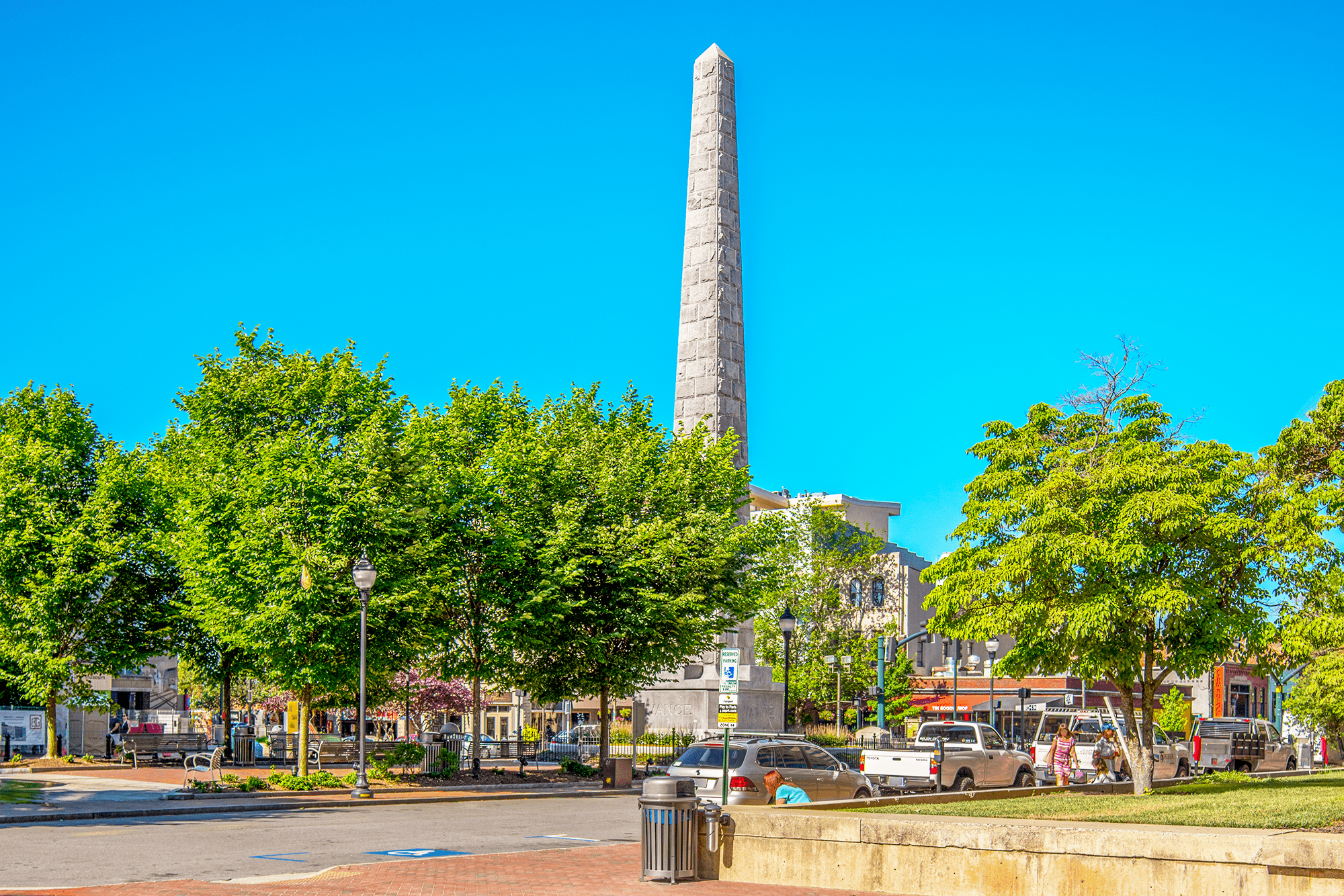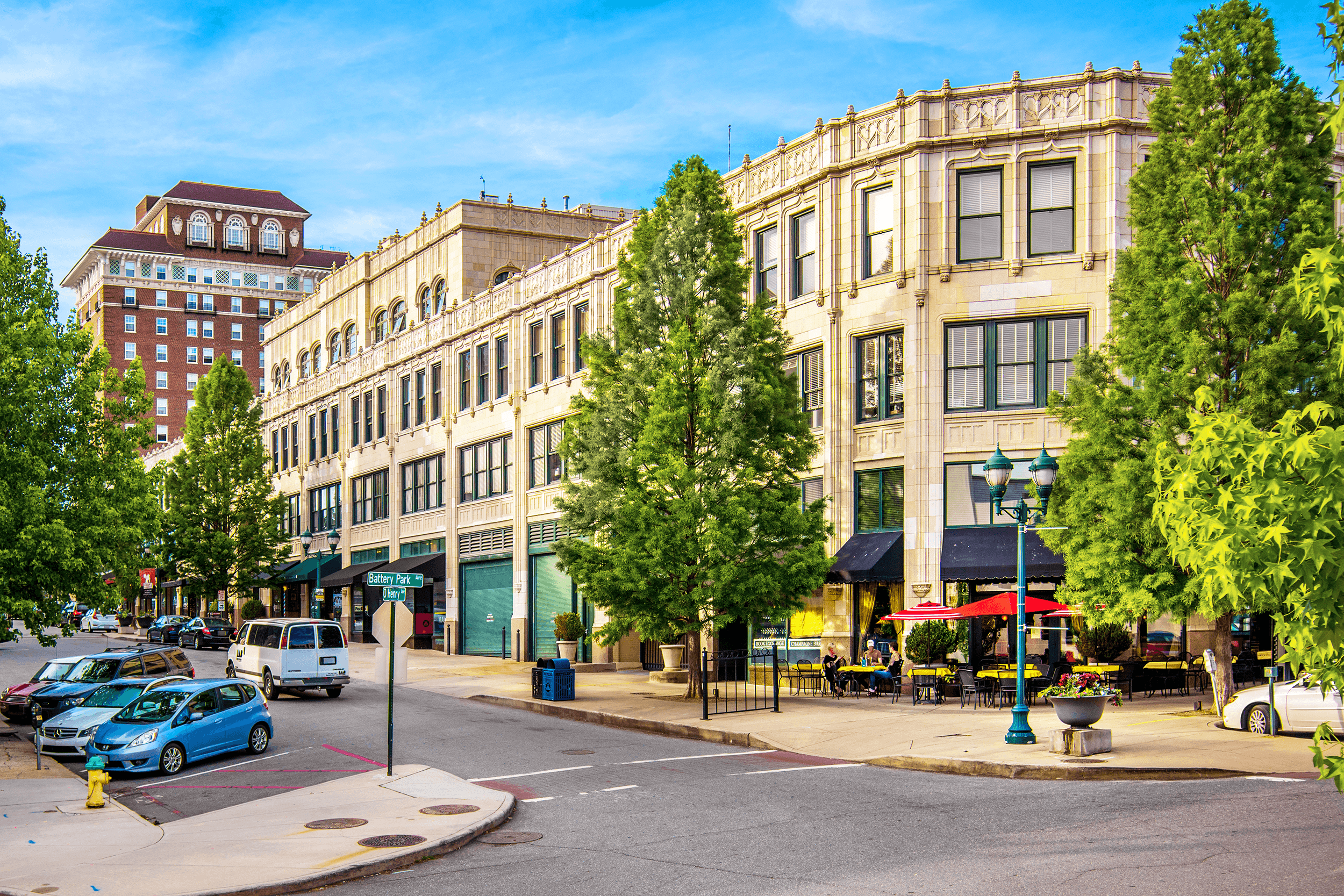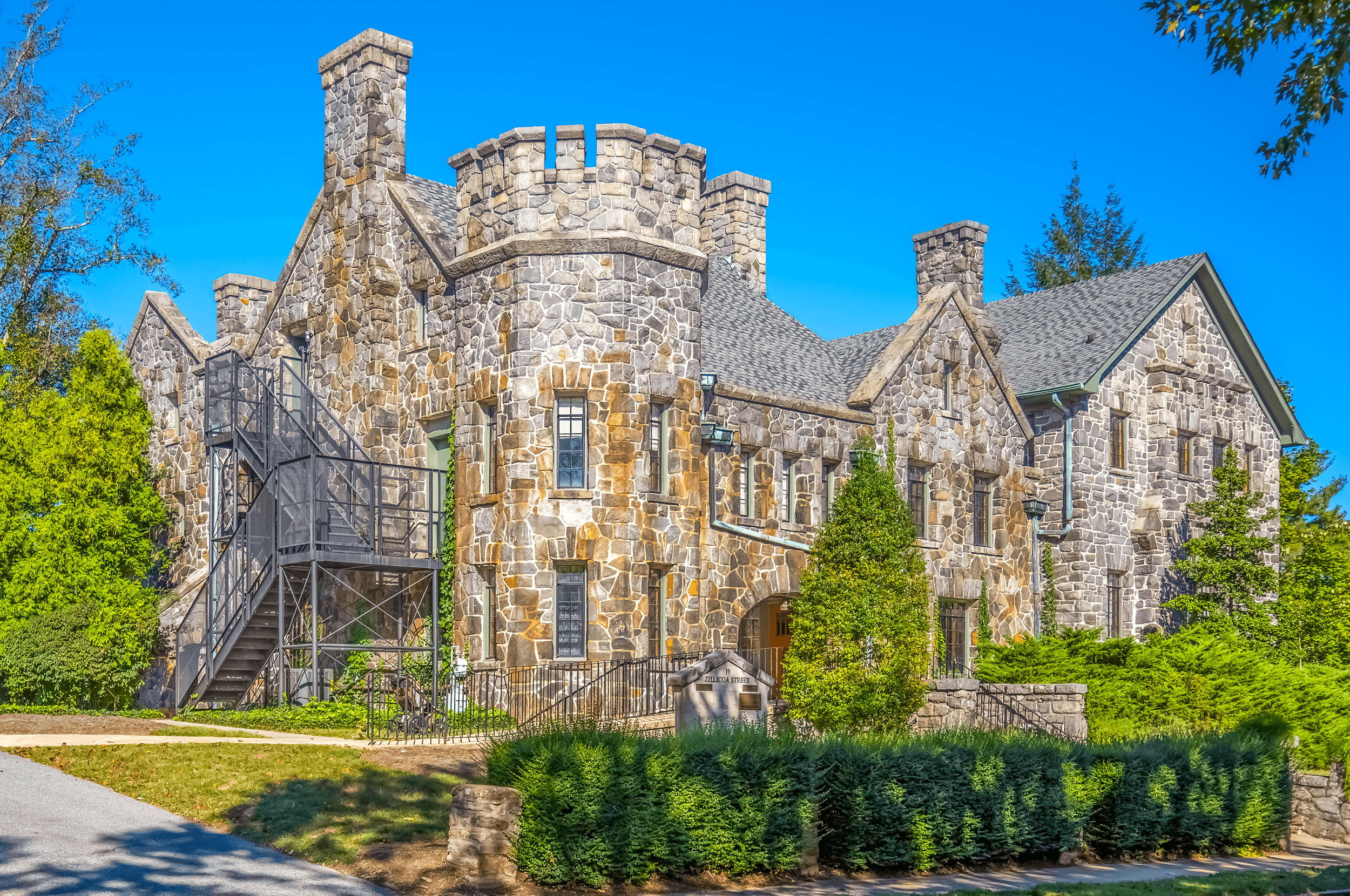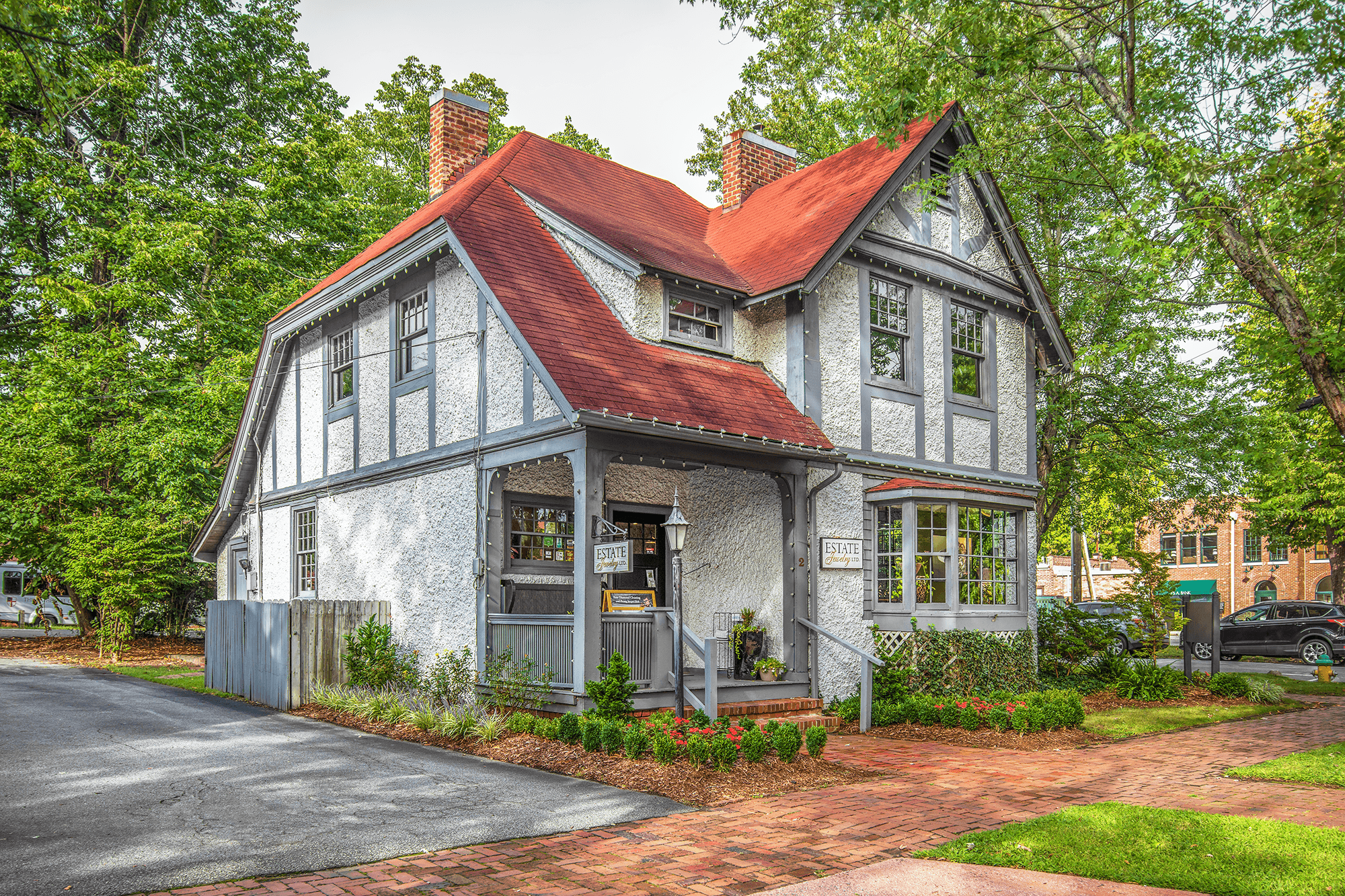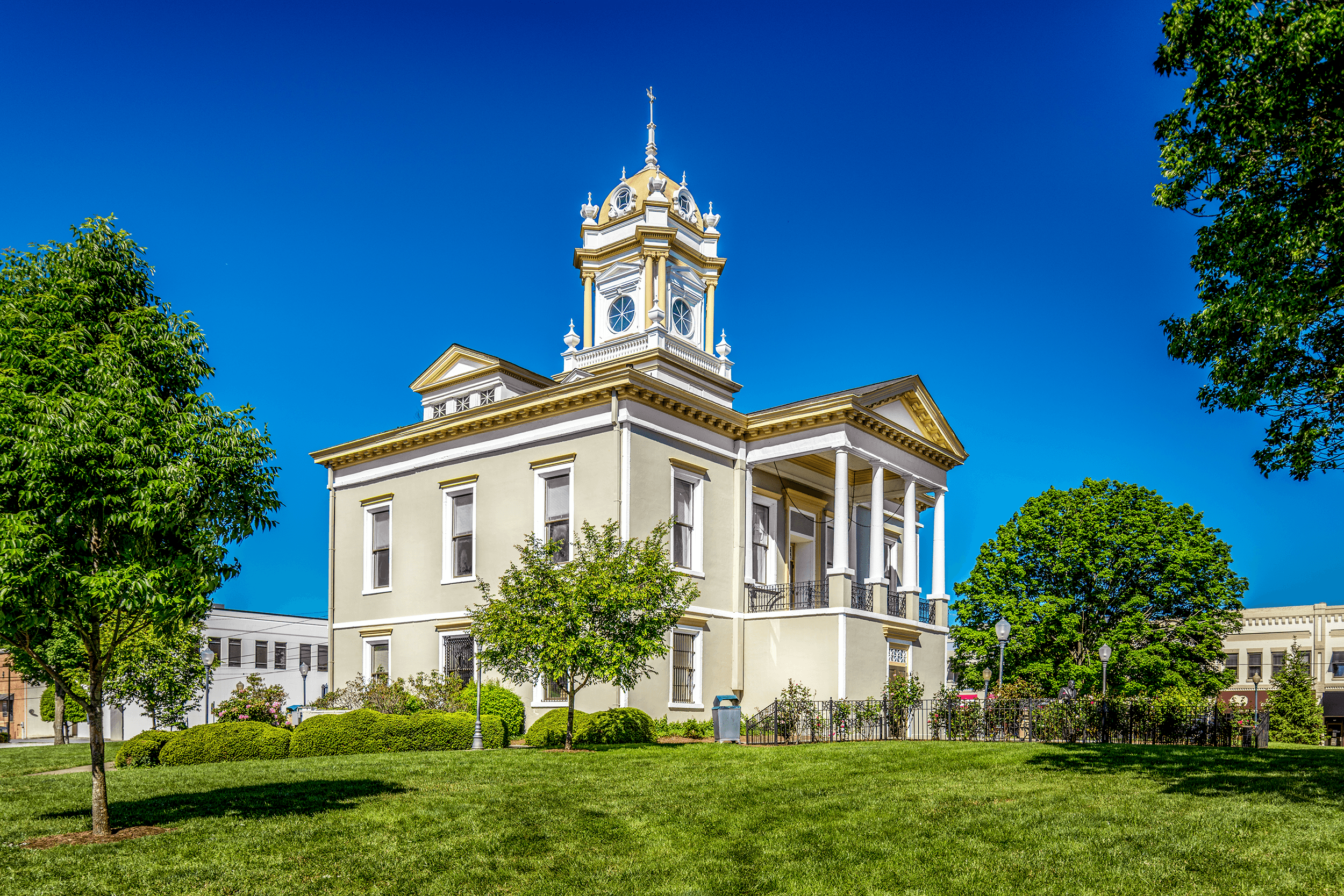Jackson Building

Updated: April 2019
Asheville’s First Skyscraper
When the Jackson Building was completed in 1924, it was not only Asheville’s first skyscraper but also the first skyscraper of Western North Carolina. Fully rented before construction had even started, the building was a complete success. Legal firms, realtors, insurance agencies, engineering firms, accountants, finance companies, and even a commercial artist rented space in the building. Jackson’s highly successful real estate business occupied the first floor entirely.
An Eye Catcher on a Tiny Lot
Situated on a tiny 25-by-62-foot lot, the thirteen-story high Jackson Building with its tall tower and neo-gothic design at the top of the structure was an eye-catcher. Standing out was likely on Lynwood Baldwin “L.B.” Jackson’s mind, when he gave the commission to Asheville architect Ronald Greene in 1923.
At that time, L. B. Jackson (1896-1974) was just twenty-eight years old and a real estate developer, who was trying to cash in on Asheville’s building boom. He wanted to create a unique and fascinating piece of architecture to “proclaim that he and Asheville had arrived” as Richard Hansley wrote in his book Asheville’s Historic Architecture. Trying to get his name out across Asheville, L. B. Jackson “was famous for the large steel-framed, open-air rooftop signs that proclaimed, See L.B.” as an advertisement for his firm.
To this day, the neo-gothic architectural elements like the grotesques on each corner of the penthouse level combined with the slender look of the building continue to fascinate Asheville’s visitors.
When the Jackson Building was completed in 1924, it was not only Asheville’s first skyscraper but also the first skyscraper of Western North Carolina.
The Westall Building
L. B. Jackson also managed the Westall Building next door, which Ronald Greene had also architected. Both the Westall Building and the Jackson Building were constructed at the same time - and this was for a good reason: they share one elevator.
Lookout Tower for City Inspectors
During those days, when coal was the primary heating and energy source, the top of the Jackson Building with its 360-degree long-range views probably served as an ideal observation tower for City inspectors. High above the rooftops, they could easily spot offenders, if their furnaces created heavy smoke lasting longer than five minutes after being fired up in the morning.
Thomas Wolfe’s Father Had Sold the Lot to L.B. Jackson
The location of the Jackson Building was owned by Thomas Wolfe’s father, William Oliver Wolfe (1851-1922), whose tombstone business was situated there. American novelist Thomas Wolfe (1900-1938) is best known for his book “Look Homeward, Angel” (1929). His mother’s boarding house has become a museum, The Thomas Wolfe Memorial, which is open to the public and can be visited. By around 1918, William Wolfe’s health had deteriorated so much that he had to retire and subsequently rented out his shop until the early 1920s when he sold the property to L. B. Jackson.
22 South Pack Square, Asheville, NC 28801
All day.
All year.
STREET VIEWING ONLY.
Private property.
Pack Square Parking Garage.
Public bus stop: Patton Ave at Biltmore Ave.
Stop Gray Line Historic Trolley: Pack Square.



